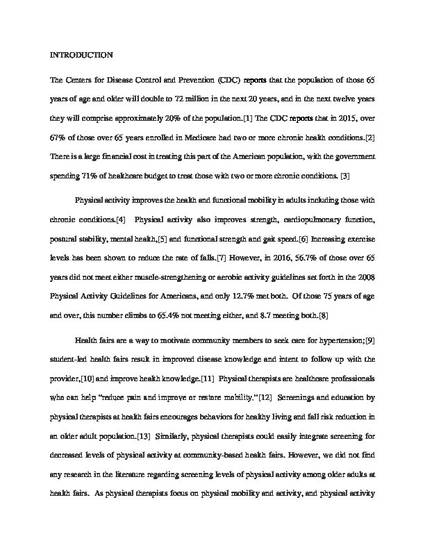
Purpose: The purpose of this study was to assess the feasibility of activity level screenings in community-based health fairs. Additionally, we assessed relationships between participants’ sociodemographics, health-related factors and self-reported activity levels.
Methods: Feasibility was assessed by the time required to conduct screenings and ease of integrating it into the health fair workflow. Physical Therapy students collected responses using Activities Specific Balance Confidence Scale (ABC) and the Physical Activity Level (PAL) items from the National Health and Nutrition Examination Survey.
Results:Screenings increased service and wait times. Participants (N=37, mean age=71.5 years) reported a mean of 4.8 fall risk factors, and a mean ABC of 74.7. Twenty-four participants were active more than 2 days per week (64.9%). Eighteen participants reported more than 2 hours of sedentary time daily (47.3%). ABC was significantly less for those reporting vision impairment (p
Conclusions: Activity level screening during community-based health fairs may require planning to decrease wait time. Fall risk factors were significantly associated with balance confidence. Balance confidence was not significantly predictive of activity levels. Other fall risk factors may be more predictive of self-reported compliance with activity recommendations.
Available at: http://works.bepress.com/preeti-oza/59/
